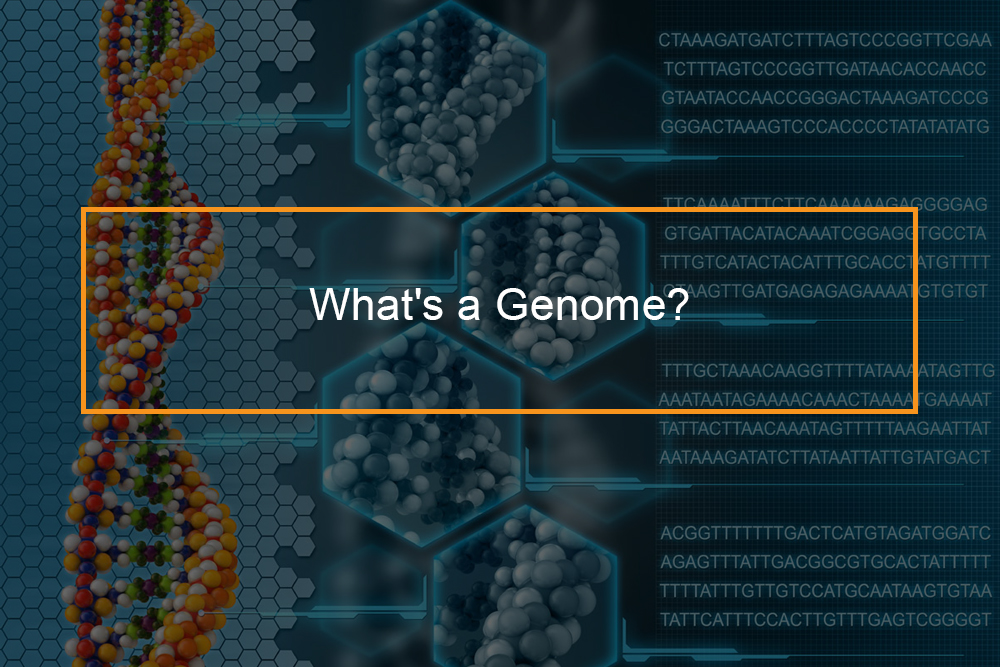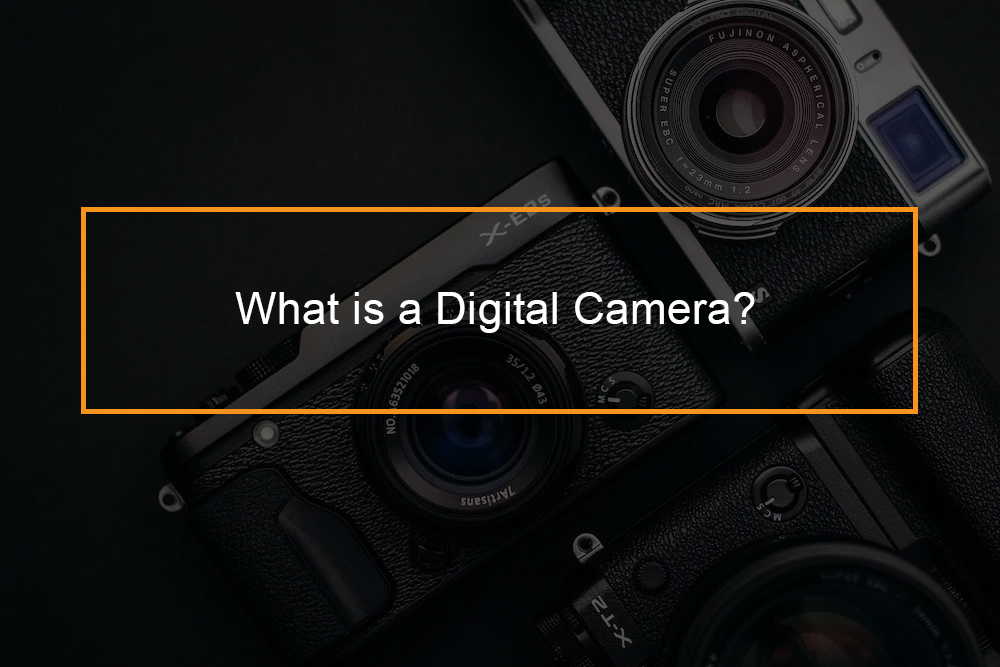 Genome sequencing is a term referring to figuring out the order of DNA nucleotides, or bases, in a genome– the law of As-Cs-Gs, and Ts making up a creature’s DNA. Our human genome is made up of over 3 billion of these genetic letters. Today, DNA sequencing on a large scale– the scale needed for enthusiastic jobs such as sequencing an entire genome– happens via modern devices. Much as your eye scans a series of letters to check out a sentence, these devices “read” a sequence of DNA bases.
Genome sequencing is a term referring to figuring out the order of DNA nucleotides, or bases, in a genome– the law of As-Cs-Gs, and Ts making up a creature’s DNA. Our human genome is made up of over 3 billion of these genetic letters. Today, DNA sequencing on a large scale– the scale needed for enthusiastic jobs such as sequencing an entire genome– happens via modern devices. Much as your eye scans a series of letters to check out a sentence, these devices “read” a sequence of DNA bases.
What is Genome Sequencing?
How Does Genome Sequencing Work?
Genome sequencing compares to “decoding,” however a sequence is still entirely in code. In a sense, a genome sequence is merely a very long string of letters in a mysterious language. When you check out a sentence, the significance doesn’t only lie in the letters sequence. The words the letters make also matter and the language grammar. In comparison, the human genome is more than just its sequence.
Understanding genome sequencing
Picture the genome as a book written without capitalization or punctuation, without breaks in between words, sentences, and with strings of nonsensical letters spread in between and even within sentences. Even in a familiar language, it is tough to choose the significance of the passage. So what about the genome which is in a far less familiar language, there’ll be more trouble involved in reading it.
So sequencing the genome doesn’t instantly lay open the genetic secrets of an entire type. Even with possession of a rough draft of the human genome sequence, much work is still incomplete. Scientists still have to equate those strings of letters into an understanding of how the genome works: what the different genes that make up the genome do, how different genes are related, and how the different parts of the genome collaborate. That is, they have to determine what those letters of the genome sequence mean.
Why is Genome Sequencing so Important?
Essential Guide to Importance of Genome Sequencing
Sequencing the genome is an essential step towards comprehending it. At least, the genome sequence will represent a valuable shortcut, helping researchers discover genes a lot more easily and rapidly. A genome sequence does include some ideas about where genes are, although scientists are merely learning to translate these ideas.
Researchers also hope that being able to study the whole genome sequence will assist them to comprehend how the genome as complete works– how genes collaborate to direct the development, development, and upkeep of an entire organism.
Lastly, genes represent less than 25 percent of the DNA in the genome, and so understanding the whole genome sequence will assist researchers to study the parts of the genome outside the genes. It includes the regulatory regions that manage how genes are turned on and off, along with long stretches of “rubbish” or “scrap” DNA– so called because we don’t yet know what, if anything, it does.
How Do You Sequence a Genome?
What’s the Process of Sequencing a Gene?
The fast answer to this concern is: in pieces. You can’t sequence the entire genome at once since offered methods of DNA sequencing can handle short stretches of DNA at a time. So instead, researchers need to break the genome into small pieces, sequence the parts, and then reassemble them in the proper order to reach the sequence of the whole genome. Much of the work associated with sequencing lies in creating this giant biological jigsaw puzzle.
Methods of Sequencing a Gene
There are two methods to the task of cutting up the genome and putting it back together again. One strategy, known as the “clone-by-clone” approach, includes first breaking the genome up into relatively large pieces, called clones, about 150,000 base sets (bp) long. Scientists use genome mapping methods (discussed in further information later) to determine where each clone belongs in the genome. Next, they slice each clone into smaller, overlapping pieces the ideal size for sequencing– about 500 BP each. Finally, they sequence the pieces and utilize the overlaps to reconstruct the sequence of the entire clone. The other strategy, called “whole-genome shotgun” approach, includes breaking the genome up into small pieces, sequencing the parts, and reassembling the fragments into the complete genome sequence.
Comparison Between The Two Methods Of Genome Sequencing
Each of these approaches has benefits and disadvantages. The clone-by-clone technique is reliable but sluggish, and the mapping step can be exceptionally lengthy. By contrast, the whole-genome shotgun approach is possibly rapid. However, it can be incredibly challenging to put together numerous tiny pieces of sequence at one time. Both approaches are currently under usage to sequence entire genomes. The genome of Saccharomyces cerevisiae was sequenced with a clone-by-clone method, while the entire-genome shotgun process was utilized to sequence the genome of the germs Haemophilus influenzae. The human genome sequencing was done using both ways.
What are Whole Genome Sequencing and Whole Exome Sequencing?
Difference Between Whole Genome Sequencing and Whole Exome Sequencing
Identifying the order of DNA building blocks (nucleotides) in a person’s genetic code, known as DNA sequencing, has advanced the study of genetics and is one method used to examine genetic disorders. Two approaches, whole exome sequencing, and whole genome sequencing are increasingly under usage in health care and research study to recognize genetic variations; both approaches count on new technologies that permit fast sequencing of large amounts of DNA. These techniques are called next-generation sequencing (or next-gen sequencing).
Advancement of The Sanger Sequencing Method
The original sequencing innovation, called Sanger sequencing (named after the researcher who developed it, Frederick Sanger), was an advancement that assisted scientists to determine the human genetic code. However, it is time-consuming and pricey. The Sanger method has been digitized to make it faster and is still used in labs today to sequence short pieces of DNA. However, it would take years to sequence all of a person’s DNA (referred to as the individual’s genome). Future-generation sequencing has sped up the process (taking only days to weeks to sequence a human genome) while reducing the cost.
Whole Exome Method Allows For Multiple Genome Sequencing
With next-generation sequencing, it is now possible to sequence large amounts of DNA, for example, all the pieces of an individual’s DNA that offer guidelines for building proteins. What we refer to as exons, comprise approximately 1 percent of a human’s genome. In the plural, all the exons in a genome are called the exome, and the approach of sequencing them is whole exome sequencing. This method enables variations in the protein-coding area of any gene to be identified, rather than in only a select couple of genes. Because the majority of recognized anomalies that cause disease take place in exons, whole exome sequencing is thought to be an efficient approach to determine possible disease-causing mutations.
Whole Genome Sequencing Helps Identify Mutations in Gene
Nevertheless, researchers have discovered that DNA variations outside the exons can affect gene activity and protein production and cause congenital diseases– mutations that whole exome sequencing would miss. Another approach, called whole genome sequencing, determines the order of all the nucleotides in an individual’s DNA and can identify variations in any part of the genome.
While you can identify much more genetic modifications with the whole genome and whole exome sequencing in comparison to select gene sequencing, the importance of much of this data is not evident. Often, an identified variation relates to a different genetic disorder that scientists haven’t discovered yet (these are called incidental or secondary findings). In addition to being utilized in the center, whole exome and whole genome sequencing are valuable techniques for scientists. Continued study of exome and genome series can help determine whether brand-new genetic variations are related to health conditions, which will aid illness diagnosis in the future.
Whole-Genome Sequencing
Intro to Whole-Genome Sequencing
Whole-genome sequencing (WGS) is a detailed approach for analyzing entire genomes. Genomic info has contributed to identifying acquired conditions, defining the anomalies that drive cancer development, and tracking disease breakouts. Quickly dropping sequencing costs and the ability to produce large volumes of information with today’s sequencers make whole-genome sequencing a useful tool for genomics research.
While this method relates to human sequencing genomes, the scalable, flexible nature of next-generation sequencing (NGS) technology makes it equally helpful for sequencing any species, such as agriculturally essential livestock, plants, or disease-related microorganisms.
Advantages of Whole-Genome Sequencing
- Offers a high-resolution, base-by-base view of the genome
- Records both large and small versions that might otherwise be missed out on
- Identifies possible causative variations for more follow-on research studies of gene expression and policy systems
- Delivers large volumes of data in a brief quantity of time to support the assembly of unique genomes
An Uncompromised View of the Genome
Unlike focused methods such as exome sequencing or targeted resequencing, which examine a limited portion of the genome, whole-genome sequencing delivers an extensive view of the entire genome. It is perfect for discovery applications, such as identifying causative variations and unique genome assembly. Whole-genome sequencing can discover single nucleotide variants, insertions/deletions, copy number changes, and extended structural versions. Due to the recent technological innovations, the latest genome sequencers can carry out whole-genome sequencing more efficiently than ever.
Key Whole-Genome Sequencing Methods
Large Whole-Genome Sequencing
Sequencing large genomes (> 5 Mb) can offer important info for disease and population-level research studies. Scientists often use massive whole-genome sequencing to evaluate tumors, examine the causes of illness, choose plants and animals for farming breeding programs, and determine common genetic variations among populations.
Advantages of Large Whole-Genome Sequencing
- Offers a high-resolution, base-by-base view of the genome
- Combines short inserts and more extended checks out to enable characterization of any genome
- Exposes disease-causing alleles that might not be known yet
- Recognizes possible causative versions for additional follow-on research studies of gene expression and policy mechanisms
Small Whole-Genome Sequencing
Small genome sequencing ( 5 Mb) involves sequencing the entire genome of germs, infection, or other microorganisms, and after that comparing the sequence to a recognized reference. Sequencing small microbial genomes can be beneficial for food testing in public health, transmittable illness monitoring, molecular epidemiology studies, and environmental metagenomics.
Advantages of Small Genome Sequencing
- Allows investigation of all genes from single organism culture
- Sequences thousands of organisms in parallel
- Provides a thorough analysis of the microbial or viral genome
- Aids discovery of brand-new biomarkers within a microbial or viral sample by offering distinct gene info from homologous chromosomes, supporting haplotyping
De Novo Sequencing
De novo sequencing refers to sequencing a novel genome where there is no referral sequence readily available for positioning. Sequence reads assemble as contigs, and the coverage quality of de novo sequence data depends upon the size and continuity of the contigs (i.e., the number of gaps in the data). Next-generation sequencing (NGS) makes it possible for much faster, more precise characterization of any types compared to traditional methods, such as Sanger sequencing. Illumina offers mate-pair sequencing and long-read technology to complement shorter reads for detailed, accurate characterization of any species.
Advantages of De Novo Sequencing
- Produces accurate reference sequences, even for complex or polyploid genomes
- Supplies helpful details for mapping genomes of novel organisms or ending up genomes of recognized organisms
- Clarifies highly similar or repetitive areas for precise de novo assembly
- Identifies structural variations and complex rearrangements, such as removals, inversions, or translocations
Phased Sequencing
Historically, whole-genome sequencing produced a single consensus sequence without distinguishing between versions on homologous chromosomes. Phased sequencing, or genome phasing, addresses this constraint by determining alleles on maternal and paternal chromosomes. This detail is often essential for comprehending gene expression patterns for a genetic illness research study.
Advantages of Phased Sequencing
- Next-generation sequencing (NGS) makes it possible for whole-genome phasing without counting on trio analysis or analytical reasoning. By identifying haplotype information, phased sequencing can notify studies of complex traits, which are frequently influenced by interactions amongst numerous genes and alleles.
- Phasing can also provide valuable information for a genetic illness research study, as disruptions to alleles in cis or trans positions on a chromosome can cause some congenital diseases.
Phasing can assist researchers in:
- Evaluate substance heterozygotes
- Measure allele-specific expression
- Determine variant linkage
- Development of Genome Sequencing Over the Years
We’ve witnessed a revolution in genome sequencing within the past twenty years with dramatic increases in speed and effectiveness combined with massive reductions in expense. Here is what you need to know:
The useful gene sequencing is evident as a diagnostic and prognostic tool. Its usage in recognition of BRCA1 mutations is already a gold standard in cancer research. Thanks to customized medication patterns and partnerships between the market and regulatory authorities, whole genome sequencing (WGS) is developing into a standard practice faster than one might have initially anticipated. It’s now possible to get your genome sequenced through the post by companies such as 24 Genetics in Europe and Dante Lab’s and Veritas Genetics and Sure Genomics in the US.
Genome Sequencing Cost Comparison
Genome Sequencing Cost and Data
The year is 2003 when the International Human Genome Sequencing Consortium begins the genome analysis race by sequencing an entire human genome. The time it took was more than 13 yrs with a cost of more than $2.3 B. By 2008, prices had currently dropped to less than $1M per genome, and in 2015 you were able to get your genome sequenced for around $900 in a few days.
The next generation sequencing (NGS) market, including however not restricted to WGS, was valued at $4.6 Bn in 2015 and expectations are it’ll reach $19Bn before 2020. One of the biggest companies in the sequencing sector is Illumina and at the start of 2017, revealed a brand-new NovaSeq variety of sequencers that “one day will make it possible for the $100 genome”, specific forecasts on when the $100 genome will take place are less precise.
Genome Sequencing Company in Europe
There’s an up-and-coming strong competitor in UK-biotech Oxford Nanopore, one of the few biotech unicorns in Europe. Convenience and cost-effectiveness are the business’s buzzwords, and it is well known for its portable MinION sequencer. At the beginning of 2018, the company raised an additional $113M to contribute to its earlier fundraising haul of $578M. Initially criticized for the accuracy of its products, its R&D team is continuing to improve quality, precision, and expense, making it a severe contender. It is also establishing an even smaller sized sequencer that might be attached to a call a SmidgION. While a MinION retails for around $865, other sequencers are still quite expensive. For example, Illumina’s more popular sequencers vary from $800,000 to almost $1M.
Genome Sequencing Data
New collaborations, like the one between 23andMe and Roche’s Genentech in 2015 to eliminate the more recent $260M deal between GSK and 23andMe or Parkinson’s, are trying to take advantage of the wealth of information (Fun truth: Google purchased 23andMe, and its co-founder married 23andMe’s CEO.). However, sequencing genomes to produce information is just part of the job. Quality checking, preprocessing of sequenced checks out and mapping to a recommendation genome still need adequate computing facilities, efficient algorithms, and indeed knowledgeable staff. It is a lengthy process.
How do US-based Companies Handle Gene Sequencing Data?
The Broad Institute in Cambridge, Massachusetts, previously mentioned that during one month it deciphered the equivalent of one human genome every 30 minutes, equivalent to 200TB of raw data. Even if that amount is smaller than what is dealt with daily by internet business, it surpasses anything biologists, and healthcare facilities have ever handled. Amazon and Google comprehend this need and already offer to keep a copy of any genome for $25 a year, which equates to roughly $0.02/ GB monthly, considering that a file is frequently in between 100 and 400GB.
US-based Sequencing.com, an online platform for individuals establishing apps to analyze genetic data from multiple sources, is offering complimentary genetic data storage (with the aid of a partnership with Microsoft) to app developers and those who wish to use its services. It and others think open the door to data is necessary for progress and likewise for ethical factors, although some rivals (such as Helix) do not permit utterly free access to your genetic information. Companies like Nebula Genomics, Zenome, and DNAtix, have even taken this a step further and are utilizing blockchain innovation to anonymize an individual’s DNA sequence and enable them to offer access to the information to the highest bidder.
Genome Sequencing Around the World
How Genome Sequencing Happens in Different Countries?
The UK was the very first to release a program committed to an entire genome sequencing in the continent of Europe. Genomics England aims to sequence approximately 100,000 complete genomes from patients with rare illness, their families, and cancer clients from 11 Genomic Medicine Centres. Ten companies, consisting of GSK, AstraZeneca and Roche have registered to take part in GENE Consortium, allowing them access to 5,000 sequenced genomes.
These corporations have raised an issue regarding access to personal health information, of course, such a massive project could not materialize without private funding. Genomics England’s community management is remarkable, with frequent updates and plans to raise public awareness. According to a month-to-month upgraded counter, almost 85,000 genomes have gone through sequencing so far!
How Does Australia and Estonia Manage Their Gene Sequencing?
On a comparable framework, Australia is currently working on the AU$ 400M, 4-year 100,000 Genomes Project, sequencing clients with rare illness and cancer to create a massive database for R&D. Estonia proposed an ambitious tailored medicine program in June 2000 and therefore became an unforeseen leader. The Estonian Genome Project Foundation had gathered data from 52,000 adult donors by February 2014 including a few hundred WGS. In March this year, it offered an additional 100,000 individuals free genetic testing to increase the size of its existing biobank considerably.
Gene Sequencing in USA and France
The Precision Medicine Initiative (PMI) in the USA, with its 1-million-volunteer health study, will gather an extensive database of health data consisting of genes and lifestyle factors. The Mayo Clinic will evaluate and keep one million blood and DNA samples. As in the UK, some of the anonymized information will be most likely offered to scientists and markets to stimulate the task, which started in 2016 with $55M from the NIH to construct the foundational collaborations and facilities needed to release the program.
In 2016, France announced the “France Medicine Genomique 2025” program, intending to open 12 sequencing centers and make sure 235,000 WGS a year. The French government is planning to inject $670M in this program, whose main aim is to use WGS as a diagnostics tool. Lots of other western countries such as Ireland and Iceland have introduced their programs. Nevertheless, when it concerns personalized medicine, considering genetic variability in between populations is a prerequisite. Western medication has historically targeted western communities, however nowadays western medicine is a worldwide practice.
How Medical Research Findings are Biased Towards Own Country?
” There is massive bias in the medical research study; Europeans have been developing drugs for Europeans without asking how suitable these pharmaceuticals are for the rest of the world,” commented Stephan Schuster, Chair of the Genome Asia consortium. Based upon this observation, the non-profit consortium GenomeAsia 100K decided to produce genomic data for Asian populations. Advocates of the effort include genomics business Macrogen in Korea and MedGenome in India, along with Illumina. Based on the PHG Foundation, at least 50,000 DNA samples have already been gathered, and preliminary work will concentrate on producing appropriate referral genome series for critical populations in Malaysia, India, Japan or Thailand. With the very same purpose, the Qatar Genome Program intends to develop the Qatari Reference Genome Map by sequencing 3,000 whole genomes, which represents around 1% of the Qatari population.
Lastly, China has been an unbeatable leader in genome sequencing for several years now. In 2010, the BGI genomics institute in Shenzhen was most likely hosting a higher sequencing capability than that of the entire United States. China’s sequencing program is not merely going for thousands however slightly one million human genomes and will include subgroups of 50,000 individuals, each with specific conditions such as cancer or metabolic disease. There will also be mates from different regions of China “to look at the various genetic backgrounds of subpopulations.”.
How to Handle the Ethical Implications?
It is tough to expect the effect of WGS in new medication, but ethical concerns concerning the privacy of health data have already emerged. It is evident that nobody would like to see GAFA (Google, Apple, Facebook, Amazon) offering genome data as they are probably already finishing with individual information from their users. A key challenge is that ethical, legal, and social issues raised by the most ingenious innovations, including cell and gene treatment along with sequencing, substantially differ in between regions. It certainly provides a particular advantage to countries with less restrictive laws, which are typically not western countries. For instance, in Europe, openness about the function of sample collection and protocols is obligatory before any research happens. The Genetic Information Nondiscrimination Act (USA)was set up in 2008 to protect individuals from being victimized based upon their DNA lawfully, but this is by no methods extensive in other countries, and the legal position in Europe stays slightly grey. Although it is much easier stated than done, regulators ought to be proactive and set up a proper structure for these promising but challenging methods while guaranteeing it does not prevent R&D.









